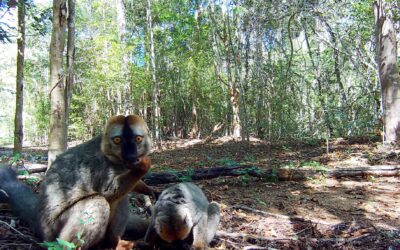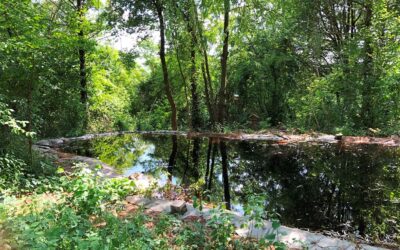Mangroves of Menabe
Along the coast of the Menabe Antimena Protected Area stretches one of the largest remaining mangrove areas in Madagascar
Where we work
Mangroves in the APMA
Das Naturschutzgebiet Menabe Antimena (APMA-Aire Protégée Menabe Antimena) umfasst neben laubabwerfenden Trockenwäldern ebenfalls mehrere Feuchtgebiete, die die ökologische Vielfalt der Region nochmal deutlich unterstreichen. Among them are two lakes, Lac Bedo and Lac Kimanaomby, as well as one of the largest remaining mangrove areas in Madagascar, covering 10-15,000 hectares and of enormous importance for the local flora and fauna.
As a breeding ground for many marine species, mangroves contribute to preserving natural fish and crustacean populations and thus provide essential food for humans.
Since 2019, we have been supporting mangrove conservation through scientific research and education for sustainable development.
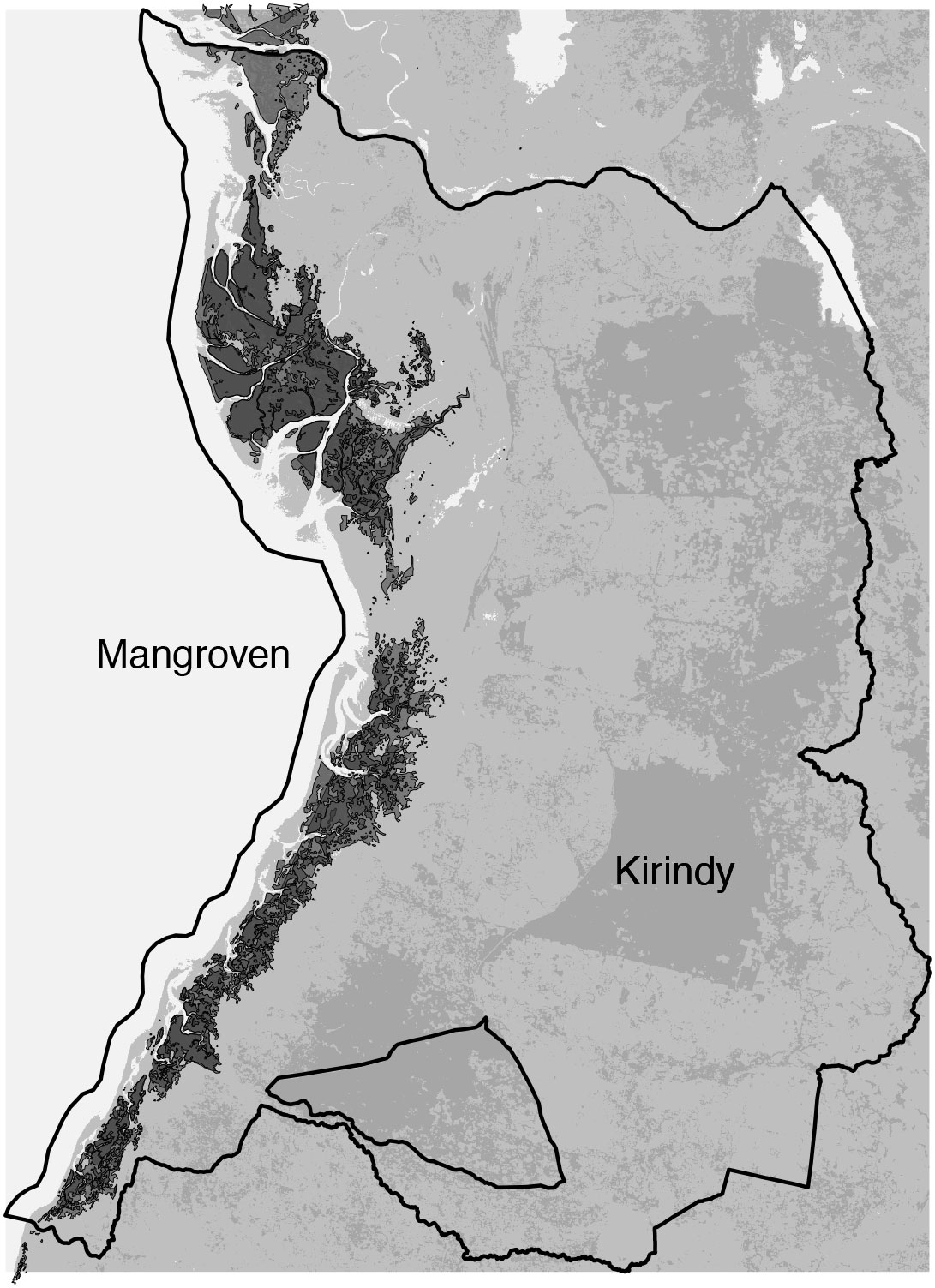
Map of the mangroves in Menabe
The dark areas along the coast show the extent of the mangroves. The dotted black line shows the boundary of the Menabe Antimena Nature Reserve and the Andranomena National Park
About the mangroves
Animals & Plants
APMA’s mangroves provide an important refuge for thousands of birds and other organisms that depend on wetlands. The mangroves in the Tsiribihina River catchment area are therefore also recognised as an Important Bird Area and a Ramsar Site. 82 bird species are counted in the IBA “Wetlands of the Tsiribihina and upper Tsiribihina river”, among them some endemics like the Madagascar plover (Charadrius thoracicus), the Madagascar teal (Anas bernieri), the Madagascar sacred ibis (Threskiornis bernieri) or the Madasgascar heron (Ardea humloti). Eight different mangrove species are described for the mangrove forests of APMA. Some nocturnal lemur species, such as the grey mouse lemur, also inhabit the mangroves and forage in the leaf thickets at night.
Last stronghold
Madagascar teal
The lakes and mangrove areas of the Menabe-Antimena Nature Reserve are among the last refuges of the Madagascar teal(Anas bernieri). It is found only in Madagascar. Their population is estimated at only 1000-2000 individuals.
Highly endangered
Madagascar sacred ibis
The Madagascar sacred ibis, threatened by extinction, is a coast-inhabitant, that occurs only on Madagascar. It depends on intact mangroves. Further studies are needed to better understand its occurrence in Menabe’s mangroves.
Lagoons
Paradise for birds
In addition to endangered endemic species, numerous other waterbird species, such as Lesser Flamingos or African Spoonbills, also live in the numerous lagoons.
Still intact
Mangroves
The mangrove forests of APMA are largely intact and there are still good stands of the eight mangrove species found there. Effective protection is therefore all the more important.
Laid table
Mudflats
The extensive tidal flats are important food sources for many bird species. There are worms, snails, mussels and crabs.
About the mangroves
People & Nature
There are several fishing villages and communities in the mangroves of the reserve. The inhabitants live mainly from fishing. During the dry season, people move from remote areas to temporary settlements in the mangroves.
The mangroves and wetlands are of enormous importance to humans and fulfil a whole range of important
Ecosystem services, especially for the local population. Mangroves protect against coastal erosion and extreme weather events and contribute to global climate protection through their ability to sequester enormous amounts of carbon dioxide.
Environmental education
Knowledge protects mangroves
It is essential to create an understanding of the importance of the mangroves and the ecological interrelationships among the local fishing communities to work with them to ensure effective protection and sustainable use of the mangroves.
Firewood
Energy efficient stoves
Like everywhere else in the world, the mangroves here are also massively cleared for firewood production. Here, alternatives, such as energy-efficient stoves for cooking, need to be developed for local people.
Change
From shrimp farm to bird paradise
Part of the area consists of former shrimp farms that are no longer in operation and are increasingly being reclaimed by waterfowl and shorebirds. These provide good bird watching opportunities and could provide income from ecotourism in the future.
Projects
CfN in Kirindy und Menabe Antimena
“Little Rangers” &
Environmental education

Little Rangers is an environmental education camp for children and youth in the Kirindy Forest.
Learn more
Species conservation & research
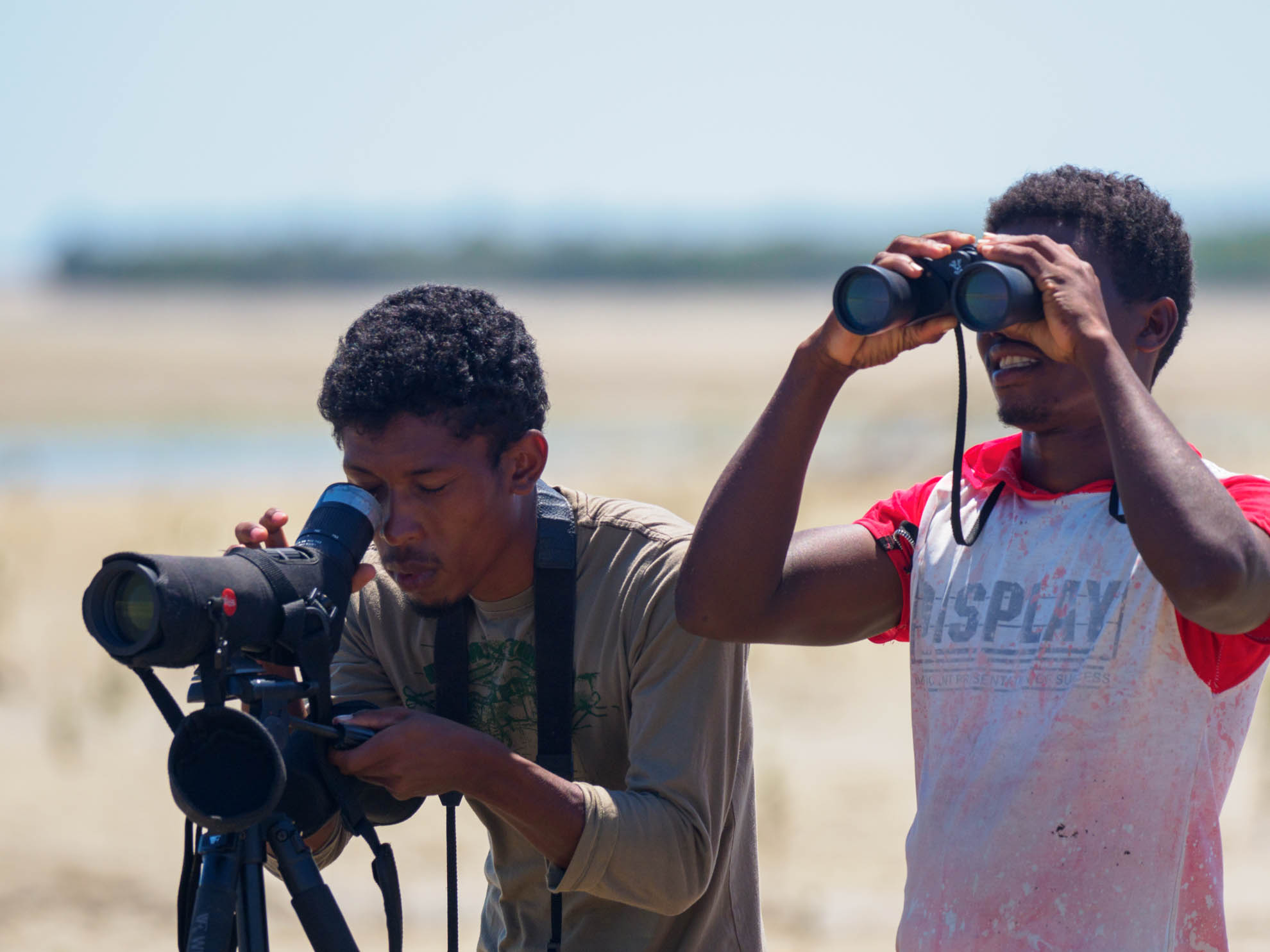
Forschung zur Ökologie und Verbreitung von Arten ist Grundlage für Naturschutzmaßnahmen.
Learn more
Forest protection
& Restoration
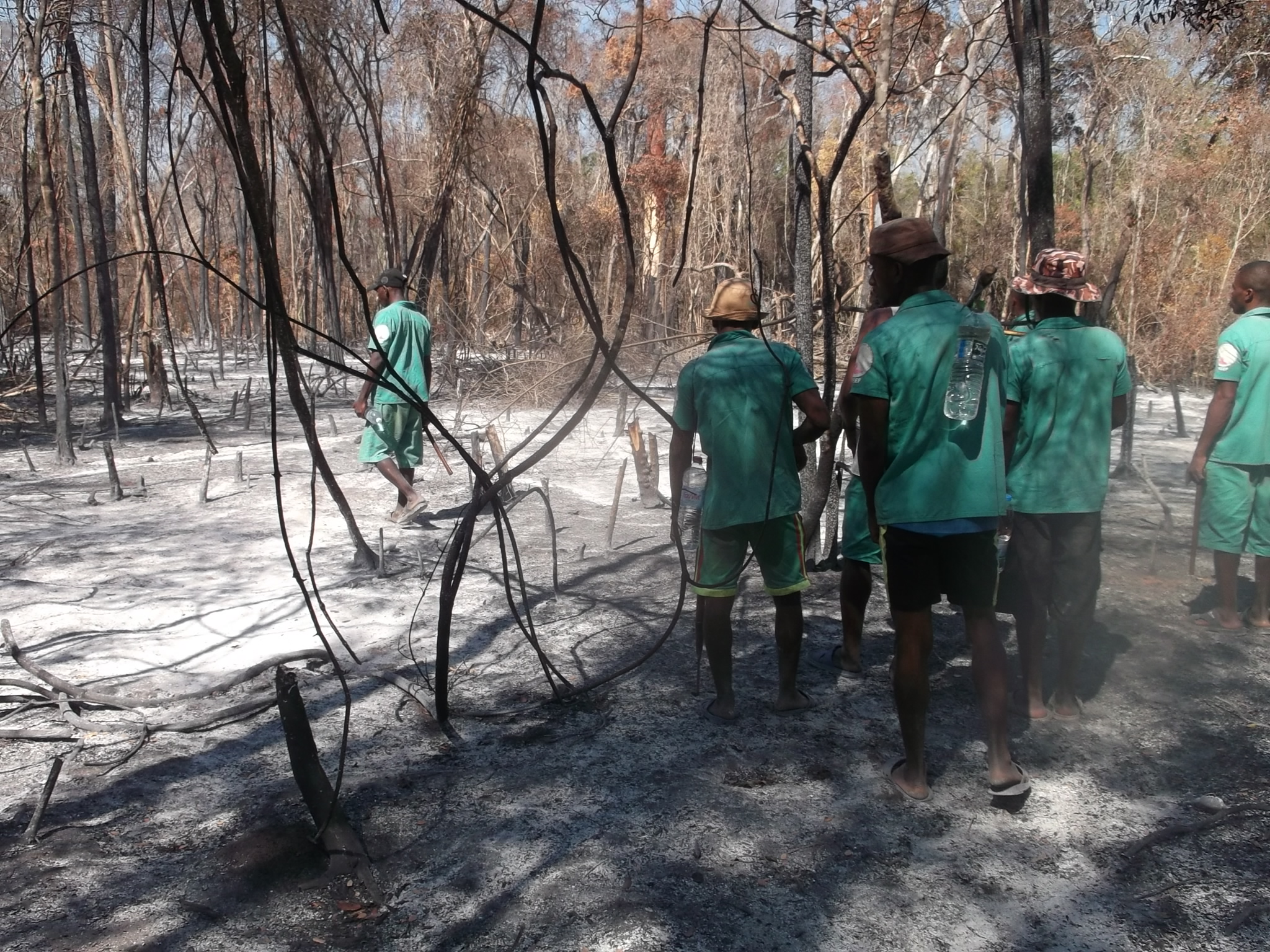
We support the management of the Kirindy Forest and the restoration of the forest for the future.
Learn more
Don’t miss
News
Follow us on Facebook and Co. to stay up to date!
New research initiatives in our biotope project
For a good year now, the biotope renaturation on the grounds of the German Primate Center has been running with our support and we are very pleased that the first research work could already take place on site: students from the University of Göttingen investigated...
How efficient is the reforestation? Study on restoring destroyed forest areas in Kirindy
Every year, fires threaten and destroy the remaining natural habitats of Madagascar. Our project area in the Kirindy Forest is also acutely threatened by this. Due to slash-and-burn agriculture, deforestation in the region has steadily increased since 2010 and reached...
Mission on our doorstep: our biotope project in Göttingen
At the beginning of the year, we were very happy about the start of our first nature conservation project in Germany: since then, we have been supporting the renaturation of a biotope for native flora and fauna on the grounds of the German Primate Center in Göttingen....


